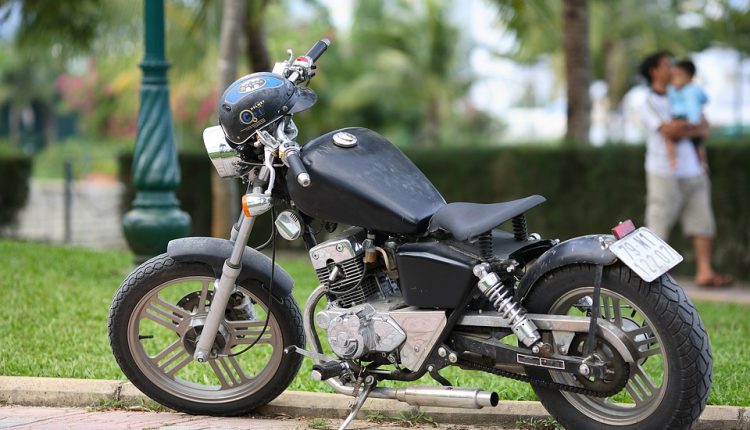If you find yourself consistently recharging the battery on your motorcycle, it’s probably time for a new one. The best batteries should function well whenever you want to take your bike out for a ride. Reliable, maintenance free and long lasting, high performance charge are key features of good bike batteries. But knowing how to choose the right battery for your motorcycle is vital to the long-term functioning of the bike.
With the amount of batteries on the market, it can be a challenging task to find the right one for your ride. Motorbikes are their own class when it comes to battery tenders too. They’re much smaller than car batteries and don’t need a lot of complication extras to do the job properly. Without the right battery though, your ride won’t be as reliable. Here are a few tips to choosing the ultimate battery for your motorcycle:
What’s the Best Battery for your Motorcycle?
One that fits! It’s easier than you think to buy the wrong motorbike battery. Before you begin your battery hunt, take the old battery out of the bike and see what size it is. You’ll need to find a battery with the same volts, size and amp as the existing one to ensure it fits and works correctly. It’s never a smart idea to use a different sized battery so stay clear to avoid potential problems.
Unless your current bike battery is definitely the original equipment, you’re taking a big chance by not double checking before you purchase a new one. To determine the correct size, you’ll need to work out the CCA (Cold Cranking Amps) of your bike. Next, measure the length, width and height of the battery cavity to ensure a correct fit.
Essential Features of Motorcycle Batteries
There are three major battery types – rechargeable lithium batteries, regular lead/acid batteries and maintenance free or AGM batteries. Conventional batteries, also known as ‘wet batteries’ are still used too. Often, these are seen in older bikes but they require a lot of maintenance to keep them in a reliable working order. Here are some essential features to consider when choosing your battery type:
- Longevity (high performance) batteries last three times longer than standard batteries. High performance batteries can increase starting power by up to 30%.
- Sulphate stop – these plate boundaries extend battery life and prevent sulphatisation, which can damage the battery. Anti-sulfation features reduce the risk of fatal sulphation too.
- Heavy duty internal development to resist vibration.
- Inter-partition connectors increase battery strength and lowers internal resistance.
- Advanced lead-calcium technology to increase starting power.
- High power hold, less cartridge storage.
- Built-in protection to prevent overcharging the battery and possibly damaging it.
- Corrosion protector.
Motorbikes are tough on batteries so it’s best to choose a long lasting, high performance battery. Batteries that are longer lasting are designed to take the brunt from your bike to encourage a better, more reliable performance. Maintenance free batteries are ideal, especially if you use your motorbike frequently. These batteries use AGM (Absorbed Glass Mat) technology to eliminate water loss. Maintenance free batteries are permanently sealed after being filled with acid so you won’t need to worry about checking the level or filling with water. Acid leaks are avoided too, which further protects your motorbike. They’re great for handling heavy vibrations and heat and help keep your motorbike batter charged if you’re an infrequent rider with their slower self-discharge cycle.
Lithium batteries are small and lightweight with a high cranking power. They’re designed to be mounted in any orientation without leaking acid or internal liquids. Unlike regular lead batteries, lithium batteries don’t produce explosive gasses like hydrogen when charging or discharging. They also have a longer life span than regular lead/acid batteries.
How to Preserve the Longevity of the Battery
Batteries, motorcycles, cars and pretty much anything mechanical are like people. If you don’t use it, you’ll lose it. To keep your battery in a healthy condition, use it on a regular basis and avoid leaving it empty for too long. If the battery is maintenance free and you don’t ride your bike often, it’s safe to leave in the bike or on a maintenance charger. For lead/acid batteries, it’s best to remove it from the bike and store it in a dry, cool and dark place for extended periods of time.
Expired Batteries
Because of the acid inside, batteries are highly hazardous waste once expired. Used batteries can be taken to battery shops to be recycled and will encourage proper disposal. Avoid purchasing batteries that are longer than 6 months old or close to expiration date as this will affect the longevity and performance.
Choosing a healthy, reliable battery for your bike means a smoother ride. Take the time to look for the best battery for your bike, do your research and ask for advice before making your decision.
Author Bio
This article is written by Jayde Ferguson, who writes for Autospark – Perth’s leading auto electrician for car and motorcycle battery replacements. You can catch Jayde on Google+.

